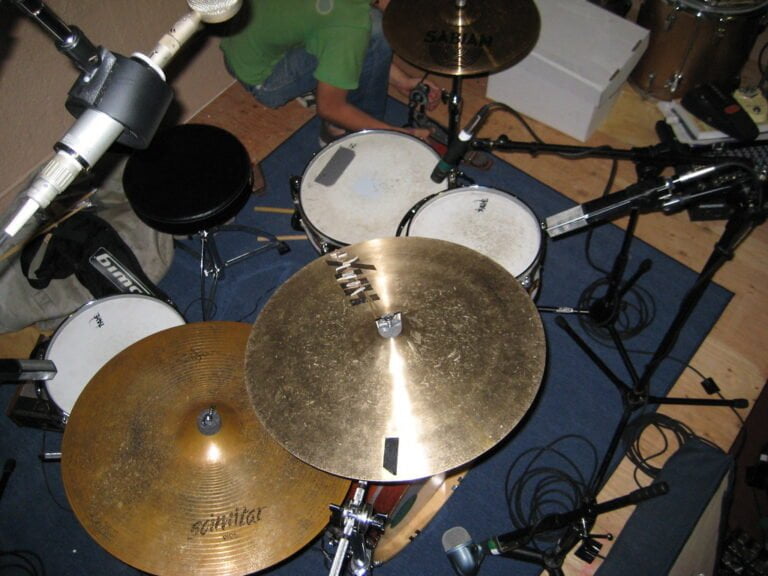Preventing and Fixing Phase Issues: Ensuring a Solid Mix Foundation
Back in the day, dealing with phase issues was a real challenge in my audio mixing journey. Understanding how to prevent and fix these problems is fundamental in establishing a solid foundation for any mix. From checking source quality to utilizing advanced phase alignment tools, there are various strategies to tackle this issue. But what really makes the difference is the impact that phase correction has on the overall sound quality and clarity of a mix. By mastering these techniques, producers can transform their mixes into a professional and cohesive sonic experience.
We are supported by our audience. When you purchase through links on our site, we may earn an affiliate commission, at no extra cost for you. Learn more.
Common Phase Issues in Mixing
Common phase issues in mixing often go unnoticed but can greatly impact the clarity and quality of the final audio production. One of the most common problems is phase discrepancies leading to comb filtering. Comb filtering occurs when sound waves from the same source arrive at the listener’s ears out of phase, causing certain frequencies to cancel each other out. This phenomenon results in an unnatural and hollow sound that can greatly degrade the mix’s overall quality.
Ensuring phase coherence is important, especially in stereo and mono playback scenarios. When the left and right channels are not in phase, it can lead to a lack of definition and width in the mix. Multi-miked instruments, such as drums, are particularly susceptible to phase problems due to the variations in mic distances and placements. These discrepancies can result in a thin and unbalanced sound, affecting the mix foundation.
To address these issues, utilizing phase correction tools is essential. These tools help align the phase of different audio signals, ensuring that they work together cohesively. By correcting phase problems, a solid mix foundation can be established, free from unwanted cancellations and inconsistencies. Implementing effective phase correction techniques is important in creating a professional and polished audio production.
Strategies for Preventing Phase Problems
In preventing phase problems during audio production, maintaining consistent mic distances is important to avoid phase cancellation in multi-miked recordings. When multiple microphones capture the same sound source, differences in the distances between the microphones and the source can lead to phase misalignment. To minimize these phase issues, adhering to the 3-1 rule for mic placement is essential. This rule states that the distance between microphones should be at least three times the distance from each microphone to the source. By following this guideline, you can reduce phase cancellation and guarantee a more coherent sound in both live and studio settings.
Additionally, it is essential to check for phase coherence during recording sessions. Monitoring the phase relationship between multiple microphones in real-time can help you detect and address any time misalignment issues promptly. Moreover, conducting mono compatibility checks early in the production process can reveal potential phase problems that might arise when the mix is collapsed to mono. Ensuring that your mix remains phase-aligned and coherent across different playback systems is important for delivering a consistent and balanced sound experience to your listeners.
Matching microphone types can also contribute to maintaining consistent phase relationships throughout the recording process. Using similar microphones with comparable polar patterns can help prevent phase discrepancies and facilitate smoother phase alignment during mixing. By implementing these strategies, you can proactively prevent phase issues and lay a solid foundation for a well-balanced and coherent mix.
Utilizing Mid-Side Processing Techniques
Mid-side processing in audio production allows for the independent manipulation of the mono (mid) and stereo (side) components of a stereo signal. This technique enables precise control over the stereo image by adjusting the balance between the center and the sides of the mix. By applying EQ adjustments separately to the mid and side channels, specific frequencies can be targeted to enhance clarity or create spatial effects. Additionally, mid-side compression helps to maintain a balanced dynamic range between the mono and stereo elements, ensuring a cohesive sound without sacrificing depth.
One significant advantage of mid-side processing is its ability to enhance stereo width without causing phase cancellation issues. Careful adjustment of the side channel can create a wider soundstage while preserving the integrity of the center image. This technique is particularly useful for addressing phase problems in the stereo field, as it allows for detailed manipulation of the spatial characteristics of the mix.
Techniques for Aligning Phase in Plugins
When addressing phase alignment in audio mixing, employing specialized plugins like InPhase can offer precise solutions to correct phase issues within the mix. InPhase provides a range of tools for adjusting phase relationships in individual tracks or across the master bus, enhancing the overall coherence and clarity of your mix. Here are some key techniques for aligning phase using plugins like InPhase:
- Visual Analysis: Utilize InPhase to visually analyze phase coherence in your mix, identifying areas that require adjustment for improved sound quality.
- Automatic Alignment: Take advantage of the automatic alignment features in InPhase to quickly and efficiently correct phase issues, saving time during the mixing process.
- Manual Adjustment: For more nuanced control, manually adjust phase relationships using InPhase to fine-tune the alignment between different elements in your mix.
- Stereo Imaging: Address phase issues in stereo imaging with precision using InPhase, ensuring a solid foundation for a well-balanced and immersive soundstage.
Ensuring Mono Compatibility for Mix Clarity
Achieving mix clarity through mono compatibility requires meticulous attention to phase coherence and stereo imaging. Mono compatibility guarantees that your mix maintains its sonic integrity when played back on mono systems. Checking mix clarity in mono is vital as it can reveal phase cancellation and stereo imaging issues that might not be apparent in a stereo mix. By collapsing the mix to mono, you can identify any phase problems that could impact the overall sound quality.
To address phase issues in mono playback, it is essential to focus on the low-end frequencies, especially in the bass range. Solid low-end reproduction in mono playback relies on fixing any phase inconsistencies that may arise. One way to check for mono compatibility is to use a phase correlation meter, which can indicate how well the stereo signal will sum to mono.
Additionally, mixing in mono can help you detect and rectify phase problems early in the production process. By listening to your mix in mono, you can pinpoint any elements that may be causing phase cancellation and make the necessary adjustments to guarantee a clear and coherent sound across all playback systems. Maintaining mono compatibility is key to achieving a consistent audio experience for listeners across various platforms.







